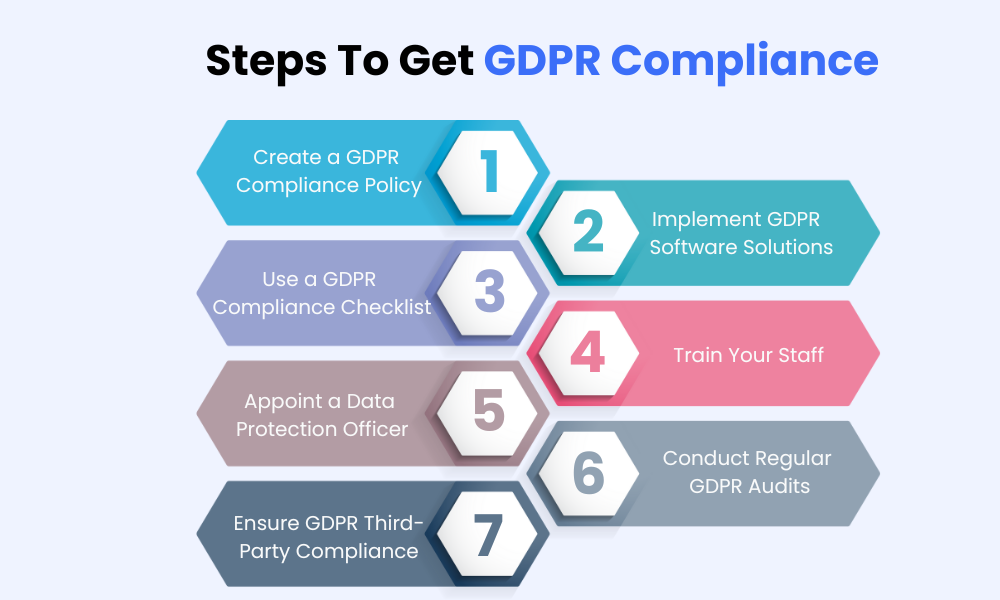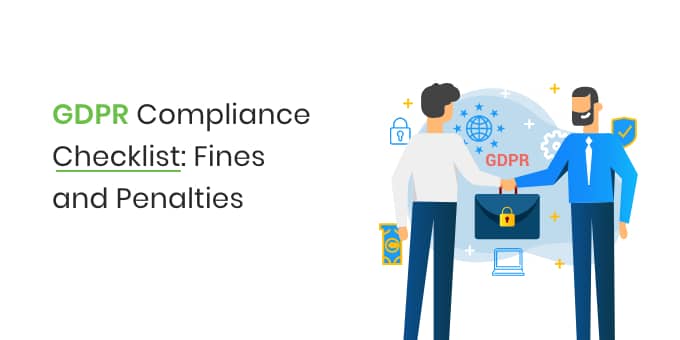In 2024, GDPR compliance remains not just important, but crucial for any business handling personal data. Whether you operate in the EU, UK, or globally, ensuring strong data protection practices safeguards your reputation, mitigates security risks, and prevents hefty fines.
This article is a comprehensive guide that covers everything you need to know to get GDPR compliant, including checklists, strategies, and solutions. You can rest assured that all aspects of GDPR compliance are addressed in this resource.
What is GDPR Compliance?
The General Data Protection Regulation (GDPR) is a legal framework designed to protect the personal data of EU and UK residents. However, its impact is global, mandating that organisations, regardless of their location, implement strict measures to secure and manage personal data responsibly. This means that businesses worldwide are part of a larger community striving for data protection and privacy.
GDPR Compliance Requirements
The General Data Protection Regulation (GDPR) mandates strict protocols to protect Personally Identifiable Information (PII). Some key GDPR compliance requirements include:
-
- GDPR Strong Authentication
Strong authentication measures, such as multi-factor authentication (MFA), ensure that only authorised personnel can access sensitive data. - GDPR Article 25 Compliance (Data Protection by Design and Default)
GDPR mandates that businesses implement data protection measures from the start, ensuring that all processes integrate privacy. - GDPR Data Processing and Data Minimisation
Collect only the data you need and limit the length of time you store it. This minimises risks in case of a data breach. - DPIA (Data Protection Impact Assessments)
Conduct DPIAs when processing activities pose a high risk to individuals’ rights and freedoms. A DPIA template can streamline this process.
- GDPR Strong Authentication
How to Get GDPR Compliant: A Step-by-Step Guide

-
- Create a GDPR Compliance Policy
Your GDPR privacy policy should detail how you handle personal data, including collection, storage, and usage practices. - Implement GDPR Compliance Software Solutions
Platforms like Seers offer GDPR compliance tools that help with consent management, reporting, and third-party compliance. - Use a GDPR Compliance Checklist
Using a thorough GDPR compliance checklist, ensure your business adheres to all the GDPR compliance requirements. This should include policies for handling subject access requests (SARs) and ensuring compliance with GDPR cross-border data transfers. - Train Your Staff
Ensure your team understands GDPR compliance for businesses, particularly GDPR compliance for SMEs, through regular GDPR compliance training. - Appoint a Data Protection Officer (DPO)
Appoint a DPO to manage your GDPR compliance strategies. A DPO ensures proper GDPR compliance reporting and monitors data protection measures. - Conduct Regular GDPR Audits
Perform regular GDPR compliance audits to ensure ongoing adherence. An audit identifies security vulnerabilities and opportunities to strengthen your GDPR compliance services. - Ensure GDPR Third-Party Compliance
Any third-party processors you work with must comply with GDPR regulations to avoid third-party attacks and liability.
- Create a GDPR Compliance Policy
GDPR Compliance for Websites and E-Commerce
GDPR compliance for websites is critical, especially for businesses using cookies. Here’s how to ensure compliance:
-
- GDPR Cookie Compliance
Use a GDPR consent management platform to gather, track, and manage user consent for cookies.
- GDPR Cookie Compliance
-
- GDPR Compliance for E-Commerce
E-commerce businesses must ensure robust measures are in place to protect customer data, including payment and financial information.
- GDPR Compliance for E-Commerce
GDPR in Healthcare and Financial Sectors
GDPR compliance in healthcare is essential for protecting sensitive medical data, while GDPR compliance for financial services ensures the safety of financial records. Both sectors must perform data protection impact assessments (DPIAs) and ensure GDPR data minimisation practices.
GDPR and Cold Emails
Sending cold emails can be tricky under GDPR. To remain compliant, you must:
-
- Obtain explicit consent from recipients.
-
- Provide clear opt-out options in every email.
Non-compliance can lead to penalties under GDPR.
GDPR Compliance Certification and DORA
GDPR compliance certification demonstrates adherence to all GDPR standards for businesses aiming to enhance trust and transparency. Additionally, companies should stay informed about related regulations like the Digital Operational Resilience Act (DORA), which focuses on cybersecurity resilience in financial sectors.
Ready to get certified?
Seers offers comprehensive GDPR e-training programs with certification.
What We Offer:
- In-depth GDPR e-training modules
- Certification upon completion
- Practical insights and best practices for GDPR adherence
- Continuous updates to keep your knowledge current with evolving regulations
GDPR Rights of Data Subjects
Individuals have several rights under GDPR, including:
-
- Right to Access
Individuals can request access to their data at any time.
- Right to Access
-
- Right to Rectification and Erasure
Users can ask businesses to correct inaccurate data or delete their information.
- Right to Rectification and Erasure
GDPR Compliance Tools and Services
The right GDPR compliance tools can simplify the compliance process. GDPR compliance software offers solutions for managing consent, conducting audits, and automating GDPR compliance reporting.
GDPR Fines and Penalties
Non-compliance with GDPR can result in significant fines. Penalties can reach up to €20 million or 4% of global turnover, whichever is higher. Regular audits and robust security measures, including GDPR risk management, can help prevent such penalties.
Conclusion:
In 2024, becoming GDPR compliant is non-negotiable. By following the steps outlined above, including implementing GDPR compliance software, conducting audits, and ensuring proper GDPR consent management, businesses can protect customer data, avoid fines, and build trust. Whether you work in e-commerce, healthcare, or finance, this guide can serve as your blueprint for achieving and maintaining GDPR compliance in the coming year.
How Seers Elevates Your GDPR Compliance
Seers Overview:
- Seers provides a comprehensive GDPR compliance platform to simplify data protection efforts.
- Our tools streamline consent management, automate reporting, and integrate smoothly with your existing systems.
Founding Purpose:
- Our platform was built to help businesses like yours easily navigate GDPR complexities, ensuring compliance while focusing on growth and efficiency.
Passion and Motivation:
- We are dedicated to data privacy and are committed to making GDPR compliance straightforward and effective.
- Our mission is to offer solutions that meet legal requirements, build trust, and enhance your brand’s reputation.
What We Offer:
- Intuitive consent management solutions
- Seamless integration with your systems
- Automation of compliance tasks, including SARs and DPIAs
- Tools for monitoring third-party compliance and avoiding penalties
Ready to streamline your GDPR compliance and boost your data protection practices?
Book your Demo Now
